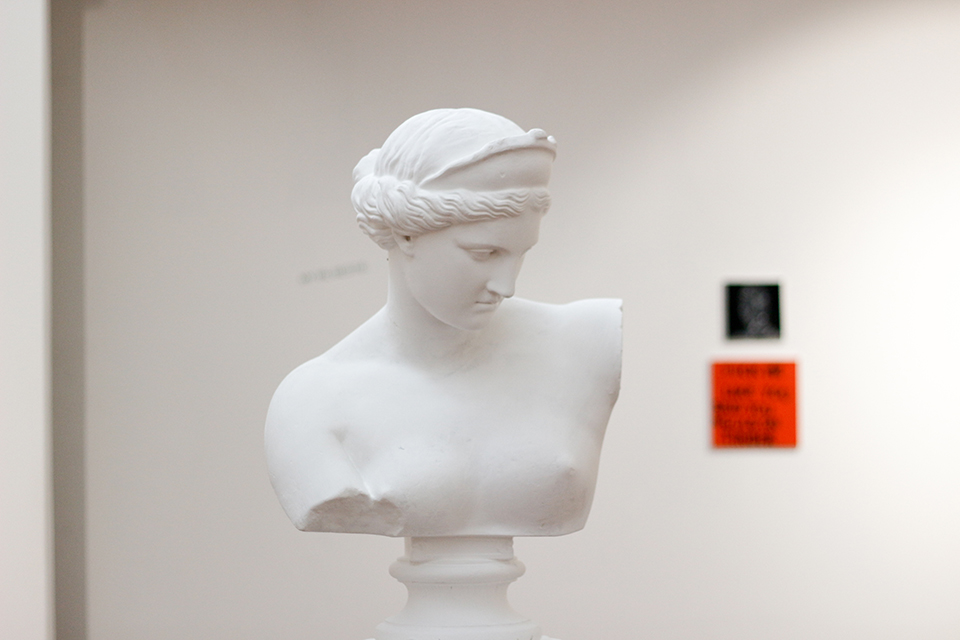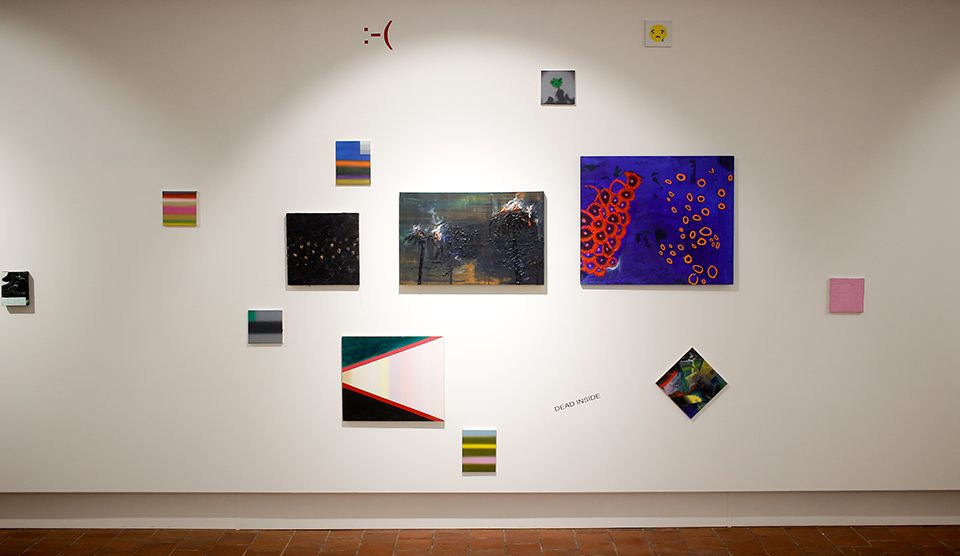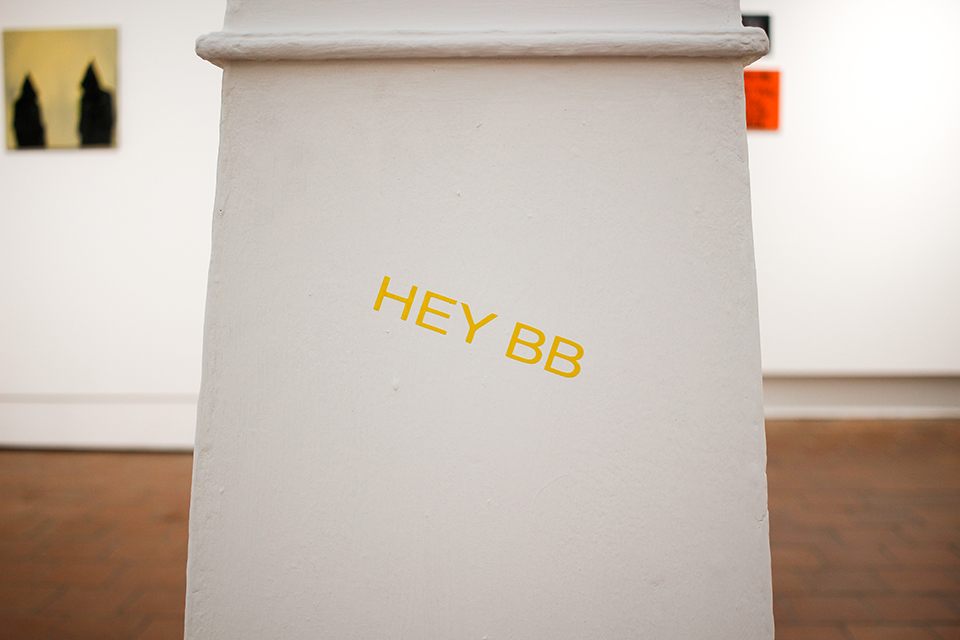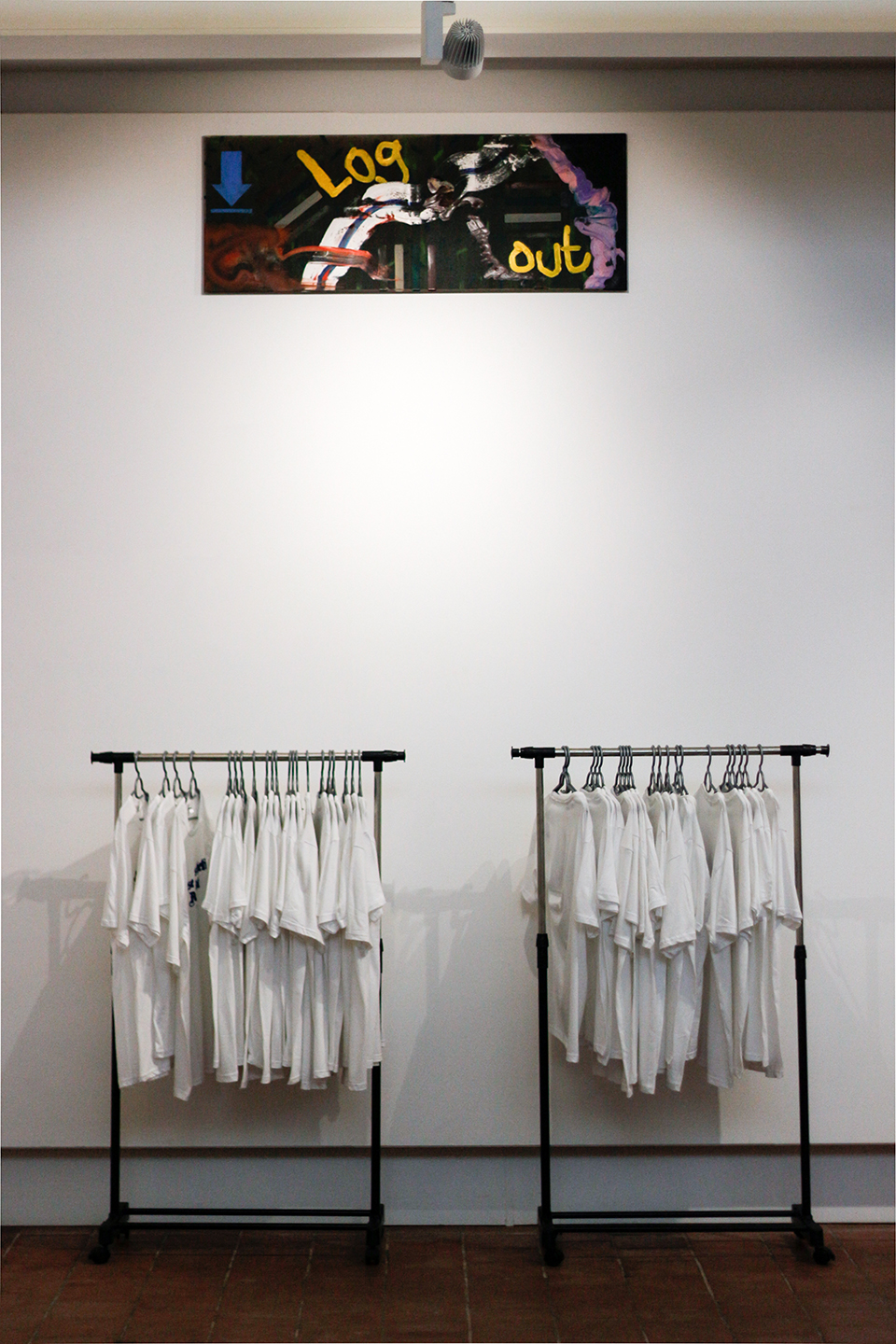Young artist Callan Grecia, having recently graduated with his Masters in Painting at UCKAR, is exploring the relationship network conditions in a Post-Internet society have on the medium of oil paint. I interviewed him about his show titled These Aesthetics Are Not New (2017).
Tell our readers about the title you chose for your exhibition, ‘These Aesthetics Are Not New’.
The title for the show came from the idea that everything comes from something. There is nothing new in an age of instantaneous access where we are constantly exposed and re-exposed to images like never before. If you look at fashion, music and art, things are cyclical and the Internet is a catalyst for this effect to occur faster and faster. I guess I was also tired of hearing and seeing the same shit over and over, heralded as ‘new’ and ‘fresh’ until you do some digging and see that you can’t really escape the languages of visual literacy that have been engrained in us consciously and subconsciously.
Tell our readers what the exhibition was about.
I’ll be honest I can’t really pinpoint things in that way because this exhibition seems to be the first step in a larger, longer process of exploration and learning, but I can say that the work deals with ideas of wish fulfillment, brought about by the instantaneous access of the Internet. The image object is also a concept I’ve been exploring, basically the image as object and the object as image and the convergence of the two (digital media and physical painted works). The work becomes a vehicle for network conditions in that it takes from this space, replicates digital aesthetics in a physical space and is then able to either be reintroduced into the digital space, or not depending on how and where the slippages between the two occur.

What are some of the Post-internet conditions/cultural aspects that you have focused on for your exhibition? Tell our readers about your decision to use paintings, t-shirts, installed elements and an immersive sound piece in your exhibition.
Curatorial considerations to include these elements were based on the feedback loop of the Internet, and the t-shirts with prints of the paintings on the walls on them, coupled with installed vinyl that spoke to internet slang, blaring rap music and cellphone notifications created this immersive, layered space that replicated the speed and frantic nature of the world within the screen.
Tell our readers about your decision to live stream your exhibition on Instagram.
The instagram live stream was essentially the last layer, which became the re-induction of the work into a digital space. It also provided instantaneous access to the paintings but with a heavy digital grain that changed the way the works would be read IRL. It was a conscious decision that paid off conceptually and also had the advantage of allowing people who could not make the opening night a chance to see the show from their own spaces.
What were some of the responses to your work at the gallery vs on Instagram?
The abstraction came into its own for the viewers who got to see them in the flesh and the figurative work was what got the most attention on instagram. The grain of the digital tends to have a flattening effect and the devices these images are viewed on lend themselves to figuration. You can’t really pick up on the intricacies of the abstract works on instagram, or feel their size, presence and depth, whereas you can easily recognize and appreciate figuration, I believe, on a mobile platform.
Check out Callan’s online catalogue to see more of his work or follow him on Instagram to some of his work’s in progress.






















































